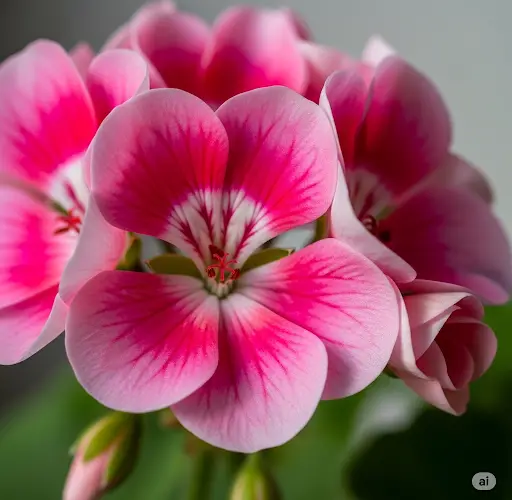If your geraniums and other flowering houseplants aren’t blooming the way they used to—or never bloomed at all—there’s a time-tested natural remedy that can help. This simple homemade fertilizer, passed down through generations, has proven especially effective for stimulating lush blooms in geraniums, but it works wonders on many flowering plants as well.
This method doesn’t rely on expensive commercial fertilizers or synthetic boosters. Instead, it uses common household ingredients to nourish the soil, strengthen the roots, and encourage abundant flowering. Once you try this recipe, you may never look back—your flowers will thank you with brilliant color and robust growth.
Why Geraniums Stop Blooming
Geraniums (Pelargoniums) are popular for their long-lasting flowers and ease of care. However, several issues can prevent them from blooming:
-
Poor soil nutrition
-
Overwatering or underwatering
-
Insufficient sunlight
-
Lack of phosphorus or potassium
-
Compacted or exhausted soil
Many of these issues can be addressed naturally—especially by replenishing the soil with the right balance of nutrients. That’s where this grandma-approved fertilizer comes in.
The Fertilizer That Changes Everything
This old-fashioned homemade fertilizer is made using three powerhouse ingredients:
-
Onion peel
-
Used black tea leaves
-
A small amount of sugar
Each of these components contributes something unique to the soil, making it more fertile and flower-friendly.
How the Ingredients Work
-
Onion Peel: Packed with potassium, calcium, iron, and magnesium, onion peels help improve root health and strengthen plant stems. Potassium is especially important for promoting flower formation and sustaining blooms.
-
Used Tea Leaves: Rich in tannins and organic matter, tea leaves act as a natural compost. They enhance soil texture, promote beneficial microbial activity, and add small amounts of nitrogen—essential for healthy green foliage.
-
Sugar: Used in moderation, sugar feeds beneficial microorganisms in the soil and provides quick energy to the plant, which can trigger flowering during active growth periods.
How to Prepare the Fertilizer
Ingredients:
-
A handful of dry onion skins
-
1 tablespoon of used tea leaves (cooled and dried)
-
1 teaspoon of sugar
-
1 liter of warm water
Instructions:
-
Place the onion skins and tea leaves into a clean container.
-
Pour the warm water over the mixture.
-
Add the sugar and stir until dissolved.
-
Cover the container and let the mixture sit for 24 hours at room temperature.
-
Strain the mixture using a sieve or cloth, separating the liquid from the solids.
What you now have is a nutrient-rich, completely organic liquid fertilizer that can be used to water your plants or as a foliar spray.
How to Use It
Watering Method:
-
Water your geraniums and other flowering plants with this solution once every 7 to 10 days.
-
Apply the fertilizer directly to the soil near the base of the plant—avoid wetting the leaves excessively.
-
Make sure the soil is not already saturated before applying.
Foliar Spray Method:
-
Pour the strained liquid into a spray bottle.
-
Lightly mist the leaves in the early morning or late evening.
-
Do not spray under strong sunlight to avoid leaf burn.
When to Apply
For best results, use this fertilizer:
-
During the active growing and blooming period (spring through early fall)
-
Especially when buds are forming or blooming slows down
-
After transplanting or pruning, to support new growth
Avoid applying during winter dormancy, as most flowering plants, including geraniums, naturally rest during this period.
What to Expect
After the second or third application, you may begin to notice:
-
More buds forming on stems
-
Longer-lasting and larger blooms
-
Richer leaf color and firmer stems
-
A general revival of tired or slow-growing plants
Many gardeners report that even long-dormant or non-blooming geraniums start flowering again after receiving this treatment.
Other Plants That Benefit
While this fertilizer was traditionally used for geraniums, it’s effective for many other flowering houseplants and garden blooms, such as:
-
Petunias
-
Marigolds
-
Begonias
-
Chrysanthemums
-
African violets
-
Roses (in pots or beds)
It’s especially useful for container plants, where nutrients are often depleted more quickly.
Additional Tips
-
Store onion skins in a dry container so you always have them on hand.
-
Use black tea leaves from regular tea—avoid flavored or herbal teas with additives.
-
Avoid overuse of sugar. Once a week is sufficient for most plants.
-
Keep the fertilizer fresh. Don’t store it longer than 2 days, as it may begin to ferment.
Final Thoughts
Sometimes, the best plant care secrets come from the past. This simple, budget-friendly fertilizer not only revives weak or blooming-challenged plants but also helps maintain long-term health without chemicals. The next time your geranium refuses to bloom or your flowers seem tired, try this old-fashioned remedy—and you might be amazed at the transformation.
Let nature take the lead, just as our grandparents did, and enjoy a season full of color and life.



